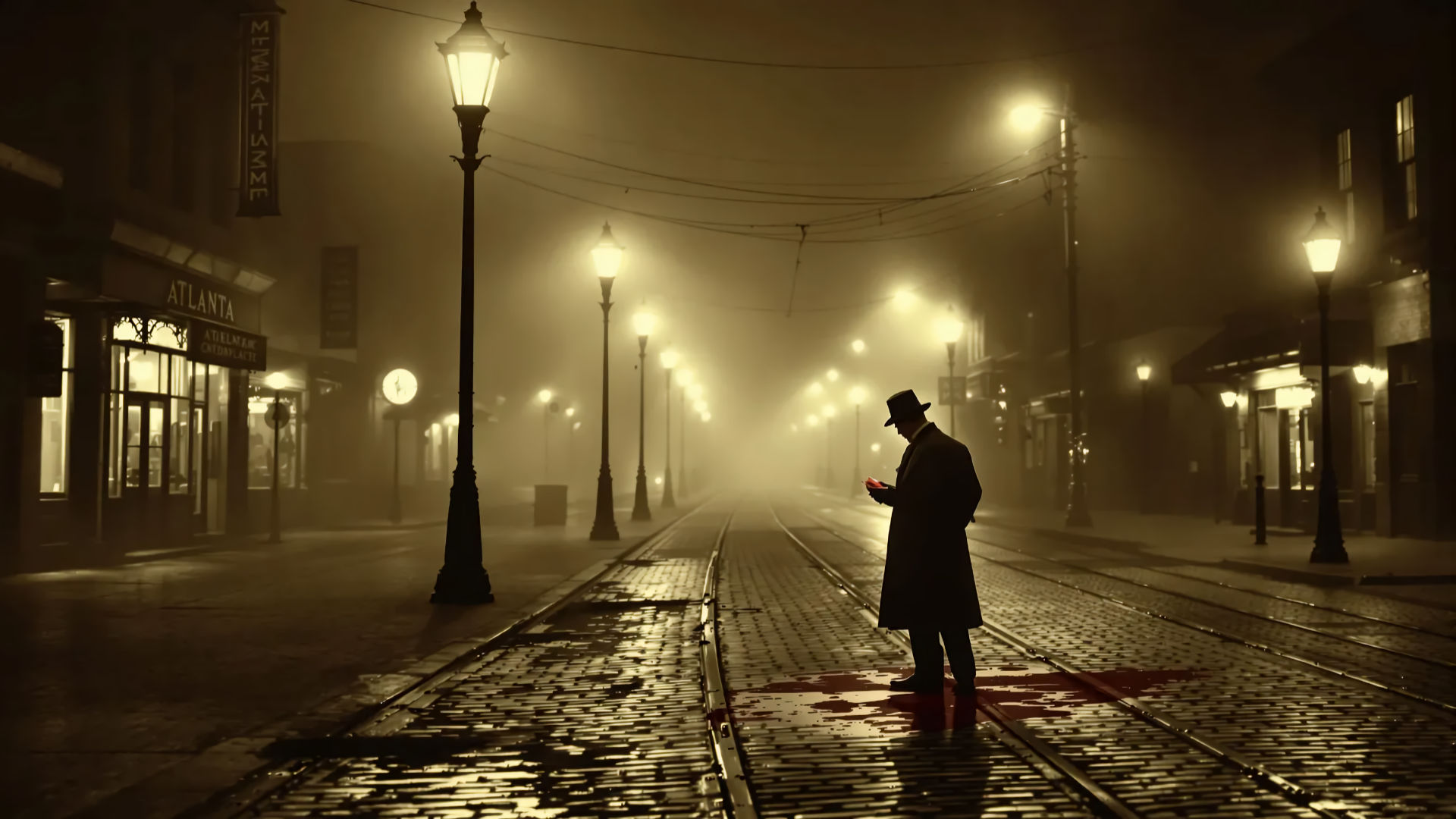The Atlanta Ripper
Between 1911 and 1912, Atlanta was stalked by something unspeakable, a killer who crept through the humid Southern nights, targeting young Black women with a blade. Newspapers soon dubbed him the Atlanta Ripper, invoking London’s infamous Whitechapel murderer, Jack the Ripper. The name stuck.
Over a year of blood and fear followed. Depending on which historian you ask, the Ripper’s tally ranged anywhere from fifteen to twenty-one victims. None of their killers were ever caught.
A City Divided
At the dawn of the twentieth century, Atlanta was booming. Once devastated by the Civil War, the city had rebuilt itself into the commercial centre of the South. But beneath the surface prosperity, was a city divided by race, class, and poverty.
The Black population, newly urbanised and ambitious, was growing rapidly. Freedmen and their descendants sought opportunity in Atlanta’s factories, laundries, and domestic service. Yet segregation was absolute. Black residents lived in overcrowded neighbourhoods and faced daily discrimination from employers, the police, and the press, and it was against this backdrop of social tension that the killings began.
The fear was instant, and so was the frustration. Church leaders and civic organisers begged city officials for better protection, for real investigators, for someone to care. But the response came too slowly and too late.
The First Victims
Most historians trace the series back to late May 1911, when a woman named either Belle Walker or Mary Walker, whose name the papers couldn’t agree on, was found murdered near Garibaldi Street. Her throat had been cut.
Two weeks later, Addie Watts was found dead, her wounds disturbingly similar. The newspapers, quick to chase a headline, began whispering of a “Southern Jack the Ripper.”
The whispers turned to screams on 1 July 1911, when Lena Sharpe was killed and her daughter Emma Lou was attacked the same evening. Emma Lou lived, and she saw the killer. She told police he was a tall, powerfully built Black man, neatly dressed, wearing a broad-brimmed hat. That brief description remains one of the few clues ever recorded by someone who looked the man who became known as the Atlanta Ripper in the eye.
Mary Yarbrough was also murdered in July 1911. She was a cook, and an unidentified tall, slender Black man, who matched the general description given by Emma Lou Sharpe, ran off when people approached her location.
An article in the Atlanta Constitution described Mary as ‘a beautiful and refined negro girl’ and declared that a serial killer was on the loose in the city.
The Eighth Victim
Just ten days later, Sadie Holley, or Hollis, depending on which paper you read, was found near Atlanta Avenue, her throat cut like the others.
The Atlanta Constitution published a front-page story on 12 July 1911 that screamed “Jack the Ripper” in bold type. It listed Holley as the eighth victim, reprinted a petition signed by Black ministers and prominent white citizens demanding action, and urged the city to offer a reward.
Police arrested a man named Henry Huff, but the evidence was thin. He was soon released, and the murders didn’t stop.
The same article listed other earlier cases stretching back to 1909 and 1910, killings of Black women that some believed were connected. Modern historians are less convinced, noting differences in methods and circumstances. Still, the true horror, the pattern of outdoor, nighttime throat-cuttings, belonged unmistakably to 1911 and 1912.
The Pattern of Fear
Week after week, the same kind of story hit the papers. A woman gone missing. A body found near a rail spur or a dimly lit street. Always the same wounds. Always at night.
The victims were young, Black or mixed-race women, neatly dressed, respectable, walking home alone from work or errands. Their throats were cut with a knife or razor. Sometimes their shoes were missing.
By autumn, Atlanta was paralysed by fear. The killings clustered around the city’s industrial corridors and rail lines, where streetlights were few and danger was easy to hide. The final toll depends on who you ask: fifteen, twenty, maybe twenty-one, but every number tells the same story: a city losing sleep, waiting for the next scream in the dark.
A City on Edge
Police made arrests, but no one ever proved guilty. Besides Huff, there was Todd Henderson, questioned after being seen with Sadie Holley. He, too, was released. Others were detained in late 1911 and 1912, yet the killings continued as if mocking the investigation.
By March 1912, a Fulton County grand jury tried to calm the panic by declaring there was no single “Ripper”, that the murders were separate crimes committed by different men. Few believed it. The pattern was too strong, the fear too deep.
Counting the Dead
So how many women died? No one can say for sure. Newspapers disagreed, sometimes reusing the “Ripper” label for any similar murder, whether related or not.
Most modern researchers accept at least 15 victims, possibly as many as 21, including later cases through 1912 and 1913. The cautious view holds that the true Ripper series, the connected cluster, ran from mid-1911 to early 1912.
The Press and the People
The story played out differently across racial lines.
White-owned papers were drawn to the lurid “Ripper” headline, while the Black press and Black churches focused on safety, justice, and the glaring absence of police protection. The Atlanta Constitution’s 12 July 1911 issue printed a petition naming seventeen murdered Black women from 1909 to 1911, a cry for help signed by both Black pastors and white business leaders.
Churches like Big Bethel hosted mass meetings and raised money for rewards, trying to do what the city would not.
Did the Ripper Ever Stop?
The murders slowed after that brutal summer of 1911, but they didn’t vanish entirely. The “Ripper” name lingered in the press, slapped onto similar crimes well into 1912, and even onto threatening notes found on fire boxes in 1914. Whether those later horrors were the work of the same man, or simply echoes of his legend, no one can say.
Who Was the Atlanta Ripper?
Theories persist:
- A single killer. The matching victim profile, knife wounds, and weekend timing suggest one murderer haunting the city for over a year.
- Several killers under one name. With inconsistent evidence and arrests that led nowhere, perhaps the “Ripper” was never one person at all, but a city’s fear made flesh in headlines.
- Copycats. Sensational coverage may have inspired other men to mimic the crimes, either to mislead investigators or to settle their own scores.
Why We’ll Never Know
Much of the police paperwork has vanished. What remains comes from newspapers, and those reports were often contradictory, even names shifted from one issue to the next. Sadie Holley became Hollis; Belle Walker became Mary. Facts dissolved into rumour, and rumour hardened into legend.
The Legacy of the Atlanta Ripper
The Atlanta Ripper case sits at the crossroads of race, fear, and early twentieth-century crime. It’s a story of a community under siege and a justice system that looked the other way.
Long before the term serial killer was coined, Atlanta lived that nightmare, a string of brutal, patterned murders that still haunt historians and true crime enthusiasts alike. More than a century later, one truth remains unchallenged: the women of Atlanta’s Black community paid for the city’s indifference with their lives, and the Ripper, whoever he was, walked away into the dark, never named, never caught.
The Atlanta Ripper FAQ
The Atlanta Ripper was an unidentified serial killer active in Atlanta, Georgia, between 1911 and 1912. The killer is believed to have murdered at least fifteen young Black women, earning comparisons to London’s Jack the Ripper.
Most victims were young African American women who worked as domestic servants or laundresses. Known victims include Belle (or Mary) Walker, Addie Watts, Lena Sharpe, Sadie Holley, and Mary Yarbrough, among others. All were killed at night, usually with their throats cut.
No one was ever convicted. Several men, including Henry Huff and Todd Henderson, were arrested, but all were released or acquitted. The killings stopped after 1912, and the identity of the murderer remains unknown.
The murders exposed racial and gender inequalities in early 20th-century policing. The victims’ community demanded justice, but the city’s segregated institutions largely ignored the case. Historians now see it as one of America’s earliest documented serial murder cases.






